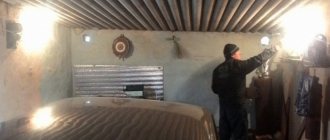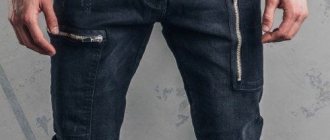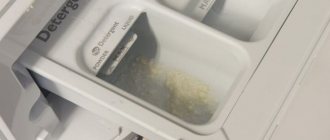Durable and practical jeans have helped each of us out more than once in a variety of situations. But sometimes even reliable jeans fail. And if you can still wear them with a hole in the leg (holes are even in fashion!), then scuffs between the legs have never been trendy. And they appear in this place quite often. And they do not delight with their appearance, but, on the contrary, become a cause of serious distress. After all, now comfortable jeans will have to be patched, or even replaced with new ones.
@Ledimai.ru
However, experienced women do not expect these troubles. They know how to prevent them, extending the shelf life of denim.
Features of the figure, physique
Oddly enough, all sorts of holes and abrasions in the pants can appear between the legs for the simple reason that the figure is not quite standard. For example, there are people whose legs, due to purely anatomical structure, do not touch each other. In this case, usually no problems arise with the product, so there is absolutely nothing to worry about. However, if the limbs are quite dense and full, then abrasions appear much more often. The fact is that when walking, your legs begin to rub against each other.
Thus, the fabric wears out many times faster, first abrasions appear, and then even holes. Therefore, those with full hips usually change their jeans more often, reports rsute.ru.
How to repair jeans by hand
To repair jeans, you don’t have to be an experienced seamstress; it’s enough to be able to hold a thread and a needle and use it to make simple seams.
What you need for work
The threads you choose for sewing on denim must have high strength.
Threads from the following manufacturers have proven themselves well:
| Firm | Threads |
| Haman | Saba 50, Saba 35, Saba 30, Rasant 75 |
| Gutermann | H120, H75, H35 |
| Coats | Epic 60, T-80N, T-60 |
| Rain Bow | A 202/120 |
If these items are not available in the store, then the choice should be made in favor of reels with an inscription indicating increased strength. If the threads are cotton, numbers 50-80 are suitable. Synthetic threads – 50-60.
To repair jeans, you should use needles with numbers 11 or 14 and a sharp end. If you do not plan to make a decorative patch, then you need to use denim fabric of the most identical color or any other fabric that matches the shade. Additionally, you will need scissors and pins.
Patch
To make a classic patch, you will need 2 scraps of fabric. The first one will be used as a lining, so it can be any color. The second one, if possible, should be matched to the tone of the jeans, then the patch will be less noticeable. However, it is impossible to completely disguise a patch, so patches are often made, on the contrary, more noticeable.
Stages of work:
- Patches should be cut from both pieces of fabric, the size of which should well cover the area of damage and leave 1 cm for the hem.
It is not necessary to fold the bottom flap if the fabric is not loose. Also, if the selected piece of fabric is very dense, then the hem will add unnecessary volume, which can sometimes even rub the body when worn.
- It is recommended to machine stitch the bottom patch. To do this, the flap should be pinned to the pants, then sewn around the perimeter using a machine. Next, you need to lay stitches in different directions inside this perimeter to better attach the fabric to the jeans.
- You need to fold the edges of the outer patch so that the remaining fabric covers the hole and iron it. Then attach the patch to the jeans using thread or pins.
- You can sew on a patch using any seam, from a hidden seam to hide the threads, to a looped one, which, on the contrary, will make the processed edge more visible.
General sewing tips
If the problem of holes and abrasions in jeans between the legs is constant, then it is recommended to strengthen this area of the pants immediately after purchasing the product and washing it for the first time.
Also, you should not wait until the abrasion turns into a hole or a small hole becomes a big one. Taking preventive measures will increase the service life of jeans.
You should carefully consider the choice of fabric for the lining. For example, thick material or thick denim can subsequently chafe the body, especially if the jeans model is narrow. To make the repair of trousers less noticeable to others, you should take the time to find sewing threads that match the color of the fabric.
Sewing the edges
When the hole is small, has a longitudinal shape and does not have torn edges, it can be sewn up with an “over the edge” seam.
For greater strength, it is recommended to first sew the seam “forward with the needle” along the edge.
Strengthening the hole
Sometimes the hole does not need to be sewn up, but strengthened. Jeans that initially have rips and holes can, over time, increase in size and turn into holes, and the holes can become shaggy and untidy.
To prevent further unraveling of the fabric, as well as to update the jeans, you need to make a patch on the wrong side. To do this, you need to take material from old jeans and make two horizontal cuts, the size of which will correspond to the hole being repaired. Then you need to carefully pull out the vertical threads.
After the desired size is reached, this patch should be cut out, retreating 1 cm from the sides. At the final stage, the cut out patch must be sewn on, placing it on the inside under the hole. Sew on with small stitches using thread to match the denim fabric. You can also sew a lining patch in a contrasting color along the edge of the hole.
Overweight
Extra pounds also do nothing to ensure that the fabric remains as good as new for years. It's the other way around. The product rubs between the legs many times faster than when the person is not overweight. In addition, a similar problem also occurs among athletes. They have fairly developed muscle mass, and their legs are dense. Therefore, they often rub against each other and all sorts of holes are formed.
The jeans were frayed between my legs. What to do?
The photo below reflects a picture familiar to many.
It would seem that this pair can be safely thrown into the trash. What to do if your jeans are frayed between your legs, how to sew up large holes discreetly and neatly?
There are two ways:
- Machine darning. Manually this will be a long and painstaking process, while a special machine will mend such a hole in 5 minutes. See before and after photos.
The machine literally recreated the structure of the fabric and strengthened the edges of the hole.
Of course, you will have to contact a sewing studio, and the sooner, the better the repair will be.
- Applying fabric patches. This is a more budget-friendly method, since you can do it yourself (if you have a machine) or ask your friends.
The quality of the fabric itself is poor
Not only excess weight or full hips can cause the product to lose its beautiful appearance. Those who own jeans with artificial abrasions may quickly become upset that the product will quickly become unusable. The fact is that such fabric is usually very thin. Therefore, it cannot withstand constant friction, washing, use and wears out many times faster than the dense version. If the fabric is supplemented with polyester or elastin, thanks to which it can stretch somewhat, then the product will last a little longer.
Methods for repairing trousers between the legs
So, how do you fix pants that are frayed between your legs? There are two main ways to restore your pants to their original appearance. Each of them is described in detail below.
Plastering - darning trousers
Patch
Figured insert
Renovation in "Boro" style
Mend pants by hand
This method is suitable for small abrasions on denim. This will require threads similar in thickness to the fibers of denim material. Also, the threads must be the same color and shade, otherwise the place in which they are sewn will be obvious.
Secure the seam to an undamaged area of the fabric and use small stitches to pass the thread over the worn area. Then the fabric will not warp. After this, make stitches across, passing the needle between the threads. It should look like weaving new fabric to replace worn-out fabric. The better the threads are selected and the tighter the seam, the less noticeable and durable the result will be.
How to make a patch on pants between the legs?
Repairing trousers using a patch, which is placed on the wrong side, is called “stuffing”. This will require a special patch fabric. It comes in two types: one can be ironed to the trousers, the other will have to be sewn on by hand. If the hole in the pants is small, then any color material will do. Otherwise, you will have to choose a color to match the trousers. You will also need, as in the previous case, plain threads.
Trim frayed threads
Glue the patch
Sew a patch on trousers
Step-by-step instructions for installing the patch:
- Start by turning your jeans inside out and looking for a rip or hole.
- Cut a piece of patch material so that it is slightly larger than the worn area.
- If the fabric is pressed with an iron, then, having set the required temperature and turned on the steam treatment, carefully place the patch from the inside of the trousers. Attention! After gluing the patch, there should be no folds in this place. To do this, pre-wash your trousers and mend them while they are slightly damp.
- If we are talking about a small hole in jeans, then on the front side, over the patch, you can darn it with plain threads (as in the first method). In this case, the patch will help the seam last much longer.
- For repairing pants made from another type of fabric, darning will not help. The inconspicuousness of the patch will be affected only by the correctly selected shade of material and thread.
Patch patches
There is another interesting, but at the same time very effective option for preserving jeans. So, you should simply take a piece of denim and sew it on the inside of the product. This way, the area there is somewhat compacted, and the jeans don't wear out as quickly as usual. Moreover, if there are at least minimal pellets, then it is best to remove them immediately using ordinary small nail scissors or a blade, but very carefully so as not to cut yourself.
What to do to extend the integrity of jeans
Having determined the cause, you can plan to eliminate it. Let’s not repeat that you need to choose jeans by size and that not everyone can afford tight models. You yourself understand: if you know that your legs are not slender enough at the top, then it is better to put aside narrow models and choose classic or loose-fitting jeans.
Advice. If you have a problem keeping denim between your legs, choose models with a regular fit or high waist.
But we’ll tell you in more detail about the prevention of such a phenomenon.
Paraffin treatment
@pikabu.ru.
A life hack that has been tried by many requires a paraffin candle..
- Clean jeans (new or washed) are thoroughly rubbed with colorless paraffin. Apply it especially carefully to connecting seams.
Important! Paraffin is applied only from the front side! If the jeans are not new, and pills have appeared on them, they must be removed before processing by carefully cutting them off with nail scissors or a blade.
- If you wear jeans constantly, paraffin rubbing is repeated at least once a week.
Reinforcement with pantyhose flaps
Some girls claim that they have found another equally effective way. They carefully sew flaps from unnecessary tights on the wrong side . At the same time, they try to make the seam as invisible as possible from the face.
other methods
The product should not be washed too often if you want to preserve it as long as possible. In this case, it is better to wash by hand and do not use conditioners or rinses with stain removers. They can only contribute to rapid wear.
In addition, it is recommended to turn the product inside out before washing. Also, if any stains appear, it is better to simply use regular laundry soap rather than putting the clothes in the washing machine.
When buying jeans, it is extremely important to make sure that they fit your figure and do not pinch anywhere. After all, narrow options will quickly wear out, because there is constant friction between the legs. If jeans are your favorite clothing, then it makes sense to buy two or three models of any shape and wear them every other day to extend their service life and not wear out one item.
Subject:
- life hacks
Why do jeans wear out?
To deal with a problem, you need to find out why it occurs in the first place. Why does the rest of the fabric remain intact, but in this place is worn out?
The main reason for this phenomenon is clear. Holes appear due to friction or excessive tension in the fabric from which the trouser parts are made . The problem arises in several cases and is related to the model and cut of the jeans, the quality of the denim and the characteristics of the owner of the pants.
- The model is not the right size . Moreover, if a large size of pants were chosen, they would be free in volume, the material would not experience tension. But if denim trousers are small, this causes holes to appear.
- Incorrect cutting , allowed by the manufacturer due to saving material, is another reason. With proper cutting, excessive tension of the fibers in the problem area does not occur while walking.
- The fabric is not of good quality . These pants became popular due to their durability, because at first they were made of canvas. However, today unscrupulous manufacturers produce excessively thin material, which quickly deteriorates with constant use.
- The individual characteristics of the owner can also affect their shelf life. Excessive fullness of your legs, peculiarities of gait and even the peculiar habit of sitting on a chair can lead to the fact that your jeans do not remain intact for as long as you would like.
Sports and denim
The bicycle is the worst enemy of jeans. Frequent and monotonous up and down movements, accompanied by friction against the edge of the saddle, destroy the fabric very quickly. This is why cyclists constantly wear their jeans between their legs. What to do in this case? If you regularly ride in jeans, then you will have to come to terms with future holes and immediately put patches on problem areas. Better yet, get a pair of trousers designed for cycling. Moreover, these can also be jeans, but specially made for such use, for example, Levi's 505 Commuter or Cadence Raw Denim Jeans. They have double or padded fabric on the seat.
Nothing is eternal
If your jeans are frayed between your legs, you already know what to do with them. But there will come a time when you have to throw them away, no matter how hard you try to distance it.
True, the Dutchman Ari Vandenberg lovingly darned and patched his Levi's jeans for 8 years.
After this, they not only completely lost their resemblance to the original, but even attracted the attention of fashion publications and won a competition from a famous clothing store in Amsterdam. And for Ari, they became, to some extent, the embodiment of part of his life path. A fitting role for real jeans, isn't it?
Step-by-step guide with photos for repairing jeans that are worn between the legs
- Wash and iron jeans that need repairing.
- Cut out the most intact flaps from another selected item. Wash and iron them too.
- Open the top crotch seam and the middle back seam (to about the middle or a little higher).
- Using a ruler and a piece of chalk or dry soap, mark the part on one front side of the jeans as shown in the photo. The rubbed area should be completely behind the line. Make a seam allowance by drawing a second line parallel to the first.
- Cut along the first marked line.
- Place the cut piece face to face on the second part of the jeans, trace a line, also draw a second parallel line for the seam allowance and also cut along the first line. Seam allowances should be the same. Check that the cut-out parts on both sides of the jeans are the same: all edges and lengths must match.
- Now you need to make a pattern for the insert. Take a sheet of paper (you can use thick polyethylene), place the piece cut out of jeans on it and trace exactly along the contour. On the sewing side of the jeans, make an allowance (the same as on the jeans). Cut it out.
- It’s good if the pattern fits completely on the scraps of denim: trace it exactly along the contour (no allowances need to be made) and cut it out. If not, then the pattern will have to be divided into two parts as shown in the photo. Make a seam allowance. When arranging the details, make sure you don’t make a mistake. The parts must be mirrored.
You can do it differently: fold 2 pieces of denim face to face. Lay out the pattern, trace it and cut it out. You will get 2 necessary parts. Check that they are the same.
You can make a different insert, for example, using this pattern:
The detail on the jeans is cut out along the bold line. Also mark a thin line on the jeans, as in the photo. We make the pattern with an allowance of about 1.5 centimeters. Cut out 2 parts for inserts. We process the edges of the parts, marked in the photo with a dotted line, in a “zigzag”. We also process the cut edges on jeans. To sew the insert to the jeans, you need to tuck its edges along a thin line and stitch, retreating about 2 mm from the edge. Then apply from the front side of the jeans, where the part was cut out, baste so that the part fits exactly into the cutout on the jeans from the side of the middle and crotch seam (if there are any unevenness, straighten them out). The other edges of the panel should line up exactly along the thin line marked on the jeans. Sew along the right side exactly along the first line on the insert.
- Place the top and bottom pieces face to face and stitch along the seam allowance line. If necessary, trim the edges by trimming excess fabric. Finish the edges of the seam with a zigzag stitch. Fold the bottom down and stitch along the right side with threads that are similar to the color of the stitching on your jeans.
- Place the pieces face to face on the back of the jeans and stitch. Make sure that both sides match each other: the beginning, middle seams and the end of the inserts should be at the same level. Finish the edges of the seams with a zigzag.
- Unscrew the inserts and stitch along the right side along them (with threads in the same color as the stitching), folding the seam over the inserts.
- Sew the back middle seam. Fasten the end of the previously opened seam (reverse button on the sewing machine). The edges of the right and left inserts in the seam should match. Finish the edge of the seam with a zigzag.
- Topstitch the seam on both sides using thread in the same color as the stitching on the jeans. Do not forget to secure the ends of the opened seams so that they do not begin to unravel.
- On the inside of the jeans, mark the crotch seam by drawing a line with a piece of soap or chalk. If the jeans are also frayed at the seam, draw a line so that the fray is hidden by the seam: step back a few millimeters from the original seam line, drawing a new line to the bottom of the legs exactly along the original seam. Sew the crotch seam along the marked line, tack the ends of the opened seam and finish the edge with a zigzag. When sewing the seam, make sure that the edges of the inserts are at the same level.
- Now you need to stitch the crotch seam with threads the color of the jeans stitching. Place the seam under the foot of the sewing machine, make sure that the seam allowance lies in the direction in which it was stitched earlier and sew a stitch on one side of the seam, making a neat “tack” of the end of the previously opened seam. Then sew a parallel stitch on the other side of the seam.
Here's what happened:
Did you like the post? Share with your friends. And also subscribe to “KRASODOM.ru” in
and in
to always be aware of new articles!











